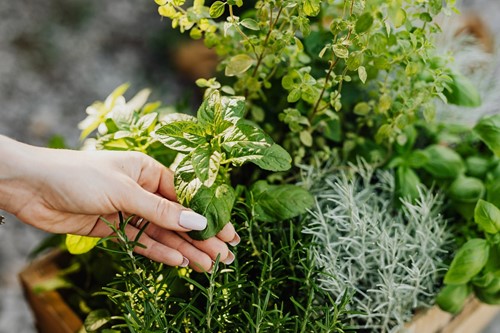
Using the map of USDA Hardiness Zones is incredibly helpful in planning a garden. Knowing your zone means knowing what plants are recommended for growing in your area and which ones might not survive. However, no matter what zone you live in, it’s possible to grow your own fruits, vegetables and herbs indoors. Here are some tips for zone-proof indoor edible gardening:
What You’ll Need
In order to grow veggies and other edible crops inside, you’ll need the right equipment. Here are the most important things you'll need:
Lights - Vegetables need a lot more light to grow than your houseplants. While it’s possible to rely purely on natural light, your crops will be much more efficient with some extra help from fluorescent or full-spectrum grow lamps.
Containers with Drainage - Size requirements will depend on what exactly you’re growing, but drainage holes are essential. This allows extra moisture to filter out of the plant rather than stay in the soil and cause potential issues like root rot or fungus.
Potting Mix - If you’re starting your indoor garden from seeds, get a potting mix specifically formulated for seed starts. Once the plants sprout, any organic potting mix made for vegetables will work.
Fertilizer - An organic liquid fertilizer works best for indoor edibles. Most vegetables and herbs will need regular doses of fertilizer to help them grow more efficiently indoors and can help them produce bigger yields. Make sure to research what your specific plant choices prefer.
What to Grow Indoors
The edible crops you can grow indoors break down into three major groups: cool-tolerant greens, sun-loving vegetables and herbs.
Cool-Tolerant Greens - This group includes salad greens like arugula, kale, spinach and mustard greens. Other plants that do well in this category include carrots, peas, radishes and Swiss chard. These crops will thrive with moderate light and cooler temperatures around 60 degrees F.
Sun-Loving Vegetables - This group of plants demands full sun or bright light and warmer temperatures (70 degrees or above). This category includes tomatoes, peppers and cucumbers. You also may find success with strawberries and dwarf citrus varieties. Note that the yield will be small and very slow compared to growing outdoors, so prepare to be patient.
Herbs - Herbs can be the trickiest to grow indoors if you don’t have a lot of natural sunlight. However, with a good grow light setup, you can grow oregano, rosemary, sage, thyme and peppermint. Basil also works indoors, but even expert gardeners consider it fairly demanding in needing a perfect environment. Try rooting your basil in water instead of planting directly into a pot and you may have more success.
Like all plant care, setting up an indoor edible garden will probably involve some trial-and-error. However, with these tips you will have the freedom to grow your own herbs, veggies and fruits no matter what hardiness zone you live in. With an easy-to-control indoor environment, your plants can thrive even in the coldest winters and hottest summers.
About the Author

Holli Miner
Hi! So glad you're here! If you're looking for an enthusiastic realtor or an equally energetic home stager, you have found both; one stop shopping, who doesn't love that?! Learn more about me in my "About" biography, and feel free to call, text, or email anytime with any questions. If you're looking to buy OR sell, I would be thrilled to be considered for the job of being the realtor who will get you where you want to be!
